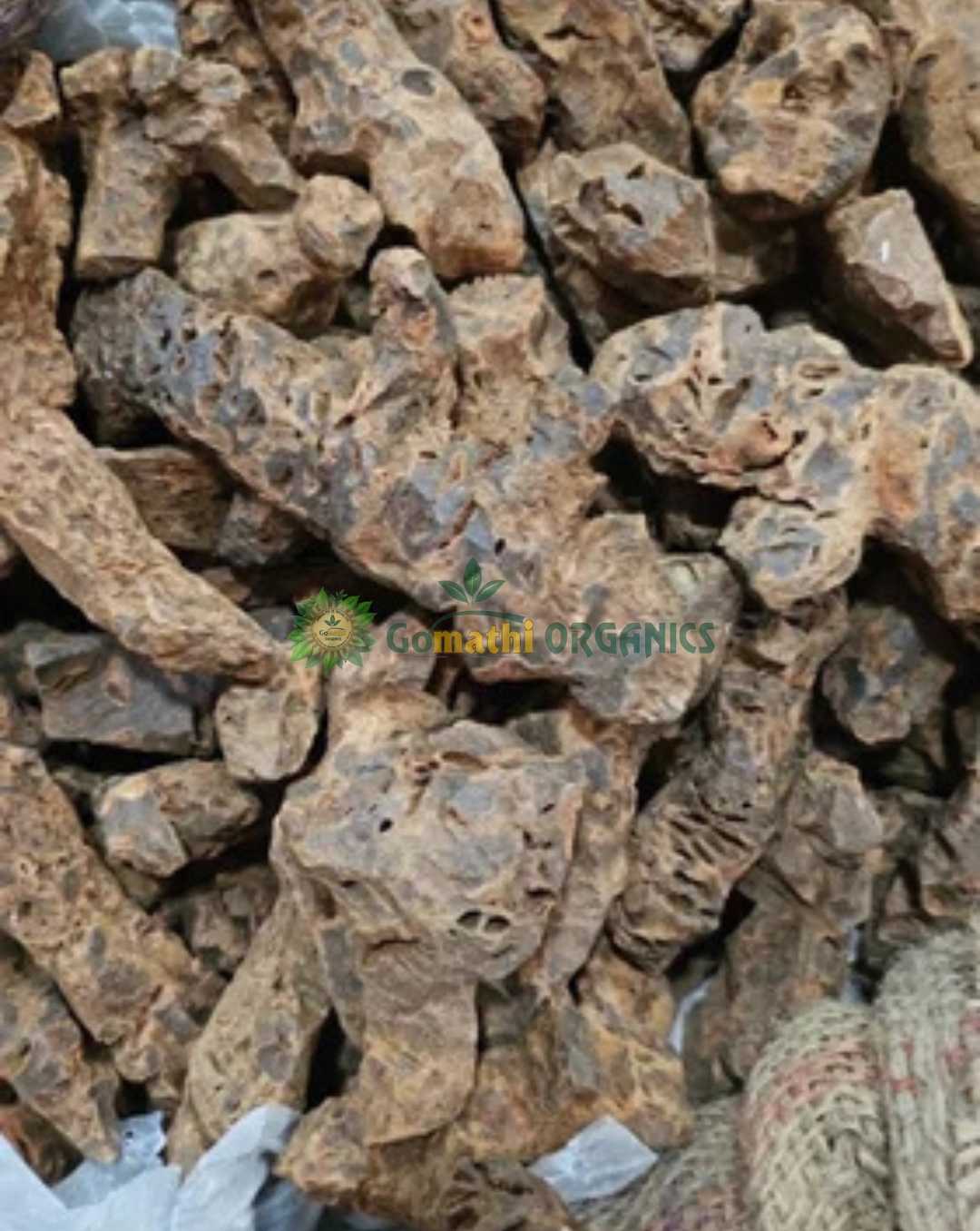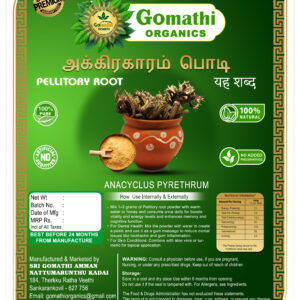What is Parangi Pattai (Indian Sarsaparilla Bark)?
🌳 Parangi Pattai (Hemidesmus indicus), also known as Indian Sarsaparilla, is a medicinal bark widely used in Ayurveda, Siddha, and Unani medicine. It is known for its cooling, detoxifying, and blood-purifying properties.
🌳 The bark, roots, and leaves of the plant are highly valued for their ability to treat skin diseases, urinary disorders, respiratory ailments, and digestive issues.
🌳 Native to India and Southeast Asia, Parangi Pattai is an essential ingredient in herbal formulations for promoting immunity, vitality, and overall wellness.
Description of Parangi Pattai (Indian Sarsaparilla Bark) Plant
🌿 Hemidesmus indicus is a twining, woody, and aromatic shrub with small purple or greenish flowers.
🌿 The bark is reddish-brown, rough in texture, and has a strong, sweet aroma.
🌿 The plant spreads through underground roots, which are extensively used in herbal medicine.
🌿 The bark and roots contain saponins, tannins, flavonoids, and essential oils, which contribute to their medicinal effects.
Morphological Characteristics of Parangi Pattai (Indian Sarsaparilla Bark)
🌿 A small, climbing or trailing shrub that grows up to 1-2 meters in height.
🌿 The bark is thin, woody, and aromatic, with a sweet, earthy scent.
🌿 Leaves are simple, oblong, and dark green, arranged oppositely along the stems.
🌿 Flowers are small, purplish-green, and bell-shaped, blooming in clusters.
🌿 The plant produces slender, elongated seed pods that split open when mature.
🌿 The bark and roots are rich in antioxidants, glycosides, and volatile oils, making them effective in treating inflammatory and skin conditions.
Habitat of Parangi Pattai (Indian Sarsaparilla Bark) – Hemidesmus indicus
🌿 Hemidesmus indicus is native to India, Sri Lanka, Nepal, and other parts of South Asia.
🌿 Grows in dry forests, riverbanks, and tropical regions, especially in Tamil Nadu, Karnataka, Kerala, Andhra Pradesh, and West Bengal.
🌿 Prefers sandy or loamy soil and thrives in warm, humid climates.
🌿 Found in grasslands, scrub forests, and hilly regions, often growing as a vine along other trees.
🌿 Requires moderate watering and partial to full sunlight for optimal growth.
Parangi Pattai (Indian Sarsaparilla Bark) Organic Information
🌳 100% pure and natural, free from artificial colors, chemicals, pesticides, or additives.
🌳 Sustainably harvested from wild-grown Indian Sarsaparilla plants, ensuring high medicinal potency.
🌳 Carefully sun-dried and hand-processed to retain its natural aroma and healing properties.
🌳 Used in Ayurvedic tonics, herbal teas, and detox formulations to promote blood purification, liver health, and skin nourishment.
🌳 Ethically sourced and eco-friendly, preserving the traditional knowledge of herbal medicine.
Different Language Names
⭐ Tamil: பரங்கிப்பட்டை (Parangi Pattai), சந்தன பட்டை (Chandana Pattai)
⭐ Hindi: चंदन की छाल (Chandan Ki Chhal)
⭐ Sanskrit: चन्दन त्वक् (Chandana Tvak), श्रीगन्ध (Shrigandha)
⭐ Malayalam: ചന്ദനം തോൽ (Chandanam Thol)
⭐ Kannada: ಸಂತಳ ಮರದ ತೊಗಟೆ (Santal Marada Togate)
⭐ Telugu: చంద్రనం చెట్టు తొక్క (Chandanam Chettu Tokka)
⭐ Bengali: চন্দন গাছের ছাল (Chandan Gacher Chhal)
⭐ Marathi: चंदनाची साल (Chandanachi Saal)
⭐ Gujarati: ચંદન ની છાલ (Chandan Ni Chhal)
⭐ Punjabi: ਚੰਦਨ ਦੀ ਛਾਲ (Chandan Di Chhal)
⭐ Odia: ଚନ୍ଦନ ଗଛ ଛାଲ (Chandan Gacha Chhal)
⭐ Assamese: চন্দন গছৰ ছাল (Chandan Gasor Chhal)
⭐ Urdu: صندل کی چھال (Sandal Ki Chhal)
⭐ Konkani: चंदन साल (Chandan Saal)
⭐ Tulu: ಚಂದನ ಸಿಪ್ಪೆ (Chandana Sippe)
⭐ Meitei (Manipuri): চন্দন গছৰ ছাল (Chandan Gachor Chhal)
⭐ Dogri: चंदन की छाल (Chandan Ki Chhal)
⭐ Kashmiri: صندل چھال (Sandal Chhal)
⭐ Maithili: चंदन छाल (Chandan Chhal)
⭐ Chhattisgarhi: चंदन छाल (Chandan Chhal)
⭐ Rajasthani: चंदन छाल (Chandan Chhal)
⭐ Sindhi: صندل جي ڇال (Sandal Ji Chhal)
⭐ Nepali: चन्दन छाल (Chandan Chhal)
⭐ Arabic: لحاء خشب الصندل (Lihā’ Khashab Al-Sandal)
⭐ Chinese: 檀香树皮 (Tánxiāng Shùpí)
⭐ Malay (Malaysia): Kulit Pokok Cendana
⭐ Thai: เปลือกต้นจันทน์หอม (Pluak Ton Chandan Hom)
⭐ Vietnamese: Vỏ cây Đàn hương
⭐ Spanish: Corteza de Sándalo
⭐ French: Écorce de Bois de Santal
⭐ Sri Lankan Sinhala: සන්ධන ගස් පතල (Sandhana Gas Patala)
⭐ Indonesian: Kulit Pohon Cendana
⭐ German: Sandelholzrinde
⭐ Italian: Corteccia di Sandalo
⭐ Family Name: Santalaceae (Sandalwood family)
⭐ Botanical (Latin) Name: Santalum album
⭐ Common Names: Sandalwood Bark, White Sandalwood Bark, Indian Sandalwood Bark
Nutritional Information (per 100g)
Energy: 180-220 kcal
Carbohydrates: 35-45g
Dietary Fiber: 8-12g
Protein: 4-7g
Calcium: 120-180mg
Iron: 3-6mg
Vitamin C: 15-25mg
Phytochemicals: Alkaloids, Tannins, Flavonoids, Saponins
Nutritional Facts
✔ Supports skin health and helps manage skin conditions.
✔ Rich in antioxidants, promoting overall immunity.
✔ Contains natural anti-inflammatory and detoxifying properties.
✔ Aids digestion and helps relieve constipation.
✔ Free from artificial colors, flavors, and preservatives.
Dosage
For Adults: 1-2 teaspoons (3-5g) per day.
For Children: ½ teaspoon (1-2g) per day.
Maximum Dosage: Do not exceed 10g per day unless recommended by a healthcare professional.
How to Consume
Internal Use
Parangi Pattai Powder with Water: Mix 1 teaspoon of powder in warm water and drink daily.
Parangi Pattai Tea: Boil 1 teaspoon of bark in water, strain, and drink.
With Honey: Mix the powder with honey and consume for added benefits.
External Use
For Skin Care: Make a paste with water or rose water and apply it to wounds, rashes, or skin irritations.
For Oral Health: Use the powder as a natural toothpowder to support oral hygiene.
How to Use & Store
✔ Store in an airtight container, away from moisture and direct sunlight.
✔ Ensure the lid is tightly closed after every use.
✔ Keep in a cool, dry place to maintain freshness and potency.
Caution to Be Taken
⚡ Consult a physician if pregnant, breastfeeding, or on medication.
⚡ Possible interactions with medications, especially those affecting digestion, liver function, and skin health.
⚡ Avoid excessive consumption to prevent potential toxicity or adverse effects.
⚡ Not suitable for infants or children without medical advice.
⚡ Long-term use is not recommended without professional guidance.
⚡ Always consult a healthcare provider for personalized dosage and safety considerations.
Important Tips
☀️ Start with a Low Dose 🌱: Begin with a small amount to assess tolerance.
☀️ Use in Moderation 🌿: Avoid excessive or prolonged use without guidance.
☀️ Choose High-Quality Products 🍁: Purchase from trusted sources to ensure purity and effectiveness.
☀️ Conduct a Patch Test 🍂: Always test on a small skin area before topical application.
☀️ Proper Storage Matters 🍃: Store in airtight, non-metal containers to preserve potency and freshness.
Harvesting & Manufacturing Method
☀️ Organically Sourced 🌳: Parangipattai (Smilax china or Indian Sarsaparilla Bark) is cultivated without synthetic chemicals, ensuring natural purity.
☀️ Sustainably Harvested 🌿: Collected from naturally growing plants in ecologically balanced regions.
☀️ Handpicked & Sun-Dried 🌱: Dried naturally under the sun to retain its medicinal properties.
☀️ No Additives or Chemicals 🌾: Processed without artificial preservatives, maintaining its raw and authentic nature.









Reviews
There are no reviews yet.